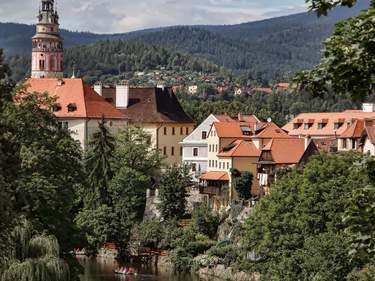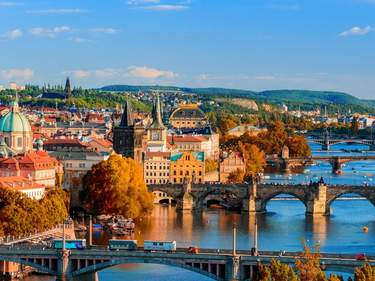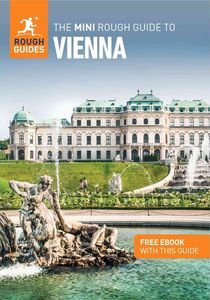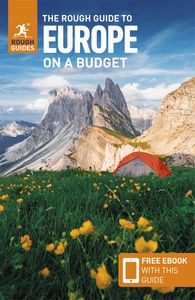The Altstadt
From Hauptplatz, it’s a few steps to the River Mur and two examples of Graz’s architectural renaissance: the Murinsel is an ultramodern floating bridge-cum-meeting-place with a café linking the
two banks, inspired by an open mussel, while the giant bulbous Kunsthaus Graz(Tues–Sun 10am–5pm; €9, or Joanneum ticket) is a museum of contemporary art, video installation and photography. Pick of the rest of the Joanneum museums is the Landeszeughaus city armoury on Herrengasse (Tues–Sun: April–Oct 10am–5pm; Nov–March guided tours only at 11am & 2pm in German; English tour at 1pm; €9, or Joanneum ticket), which bristles with sixteenth-century weapons used to keep the Turks at bay.
Graz Farmers’ Market
Known for its wine-growing and farming, the region of Styria (Steiermarkt) produces local specialities, in particular Kürbiskernöl (pumpkin seed oil), which has a delicious, nutty flavour and is used in salad dressings and other dishes on many Graz menus. The excellent Graz’s farmers’ market, Kaiser-Josef-Platz (Mon–Sat 6am–1pm), is a good place to buy bottles of Kürbiskernöl, local cheeses, breads, meat and other produce. There are also snack stands, coffee joints and fresh juice bars.
Schlossberg
For views over the city, head up the wooded hill that overlooks the town: either walk up the zigzagging stone stairs from Schlossbergplatz or take the lift (daily 8am–12.30am; €1.30 single) or funicular from Sackstrasse (April–Sept Mon–Thurs 9am–midnight, Fri & Sat 9am–2am, Sun 9am–11pm; Oct–March Mon–Thurs 10am–midnight, Fri & Sat 10am–2am, Sun 10am–10pm; €2.20). The Schloss, or fortress, was destroyed by Napoleon in 1809; only a few prominent features survive – noticeably the huge sixteenth-century Uhrturm (clock tower), and more distant Glockenturm (bell tower).
Schloss Eggenberg
Some 4km west of the city centre (tram #1 from the train station), the Baroque Schloss Eggenberg was designed in imitation of the Escorial for Hans Ulrich von Eggenberg (1568–1634), chief minister to Ferdinand II. It houses on one floor the Alte Galerie (April–Oct Wed–Sun 10am–5pm; Nov to early Jan by guided tour only; €9, or Joanneum ticket), whose intelligently curated collection includes thirteenth-century devotional works, and a macabre Triumph of Death by Jan Brueghel. The palace rooms, Prunkräume (hourly guided tours Tues–Sun 10am–4pm, except 1pm; €11.50, or Joanneum ticket), were designed as an allegory of the universe (24 rooms, 365 windows on the outside, four towers and so on); the highlight is the “Room of the Planets”, a great hall with an elaborate ceiling and wall paintings depicting the zodiac, and also the three Asian rooms, in particular the one decorated with rare Japanese panels from Osaka.
_listing_1640546826392.jpeg)





















